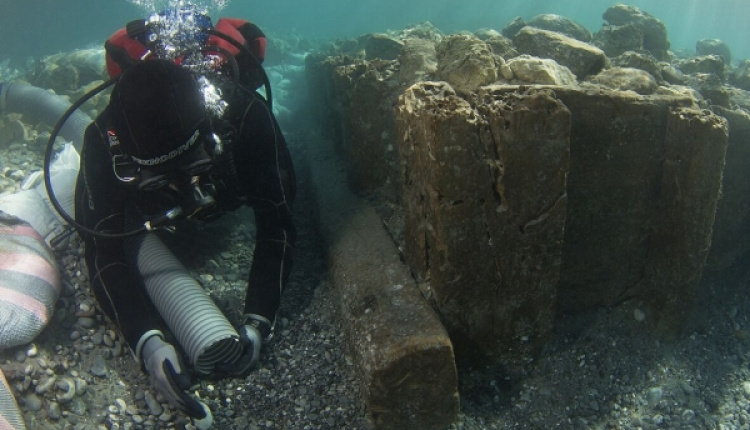Greek And Danish Archeological Team Investigate Important Harbour Town
- by XpatAthens
- Thursday, 14 January 2016

In Greece, underwater excavations of Lechaion, ancient Corinth’s partially submerged harbour town, reveal the infrastructure of more than a thousand years of flourishing maritime trade. Researchers from the Greek Ministry of Culture and Sports and the University of Copenhagen are using cutting-edge methods to uncover the configuration and scale of the harbour.
Corinth ranked among the most economically and militarily powerful, and enduring, cities of the Greek, Roman and Byzantine periods. The city had an exceptional geographical advantage in the North East corner of the Peloponnese and controlled the Isthmus that facilitated land travel between Northern and Southern Greece, and travel by sea between the Western and Eastern Mediterranean.
Corinth, which lay some three kilometres from the sea, built on this natural advantage by constructing two harbour towns – the main harbour Lechaion on the Corinthian Gulf to the West, and Kenchreai on the Saronic Gulf to the East (see map to the right).
"According to ancient sources, most of the city's wealth derived from the maritime trade that passed through her two harbours, eventually earning her the nickname ‘Wealthy Corinth’," says archeaologist Bjørn Lovén from the University of Copenhagen and co-director of the Lechaion Harbour Project (LHP).
The moles and warehouses of Lechaion saw vibrant maritime activity for over a thousand years, from the 6th century BC to the 6th century AD. Ships and fleets departed from here laden with cargoes, colonists and marines destined for ports all over the Mediterranean and beyond.
To read more, please visit: Humanities DK


